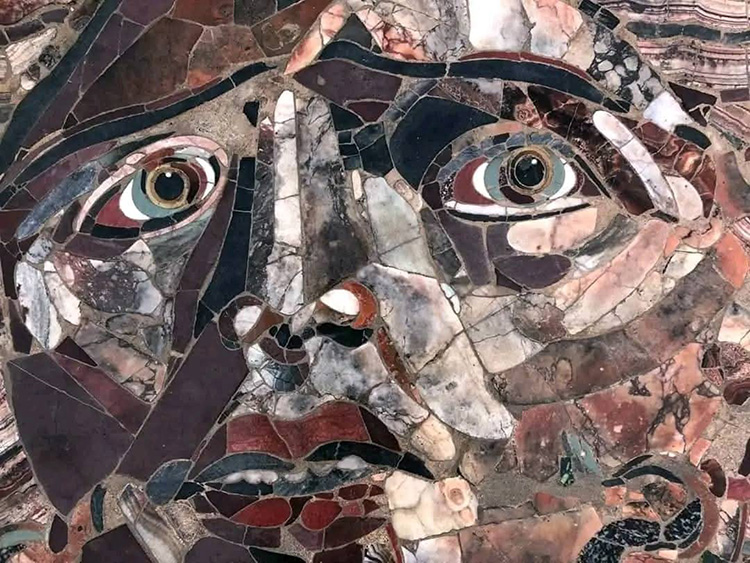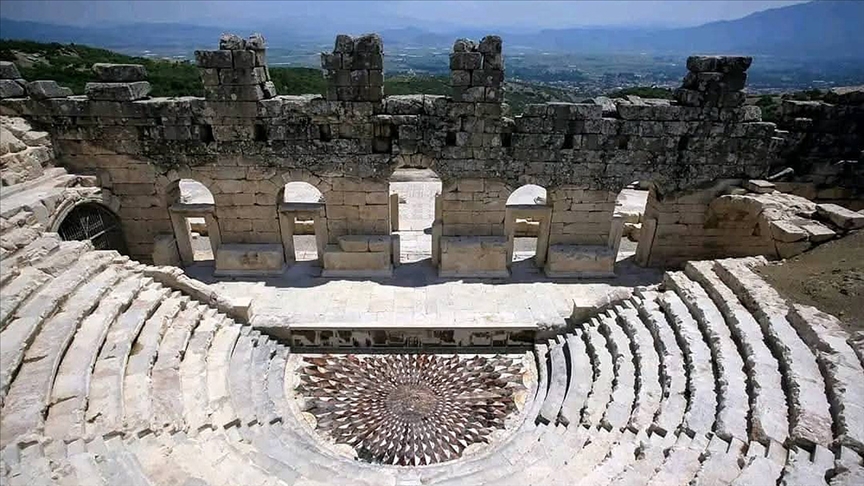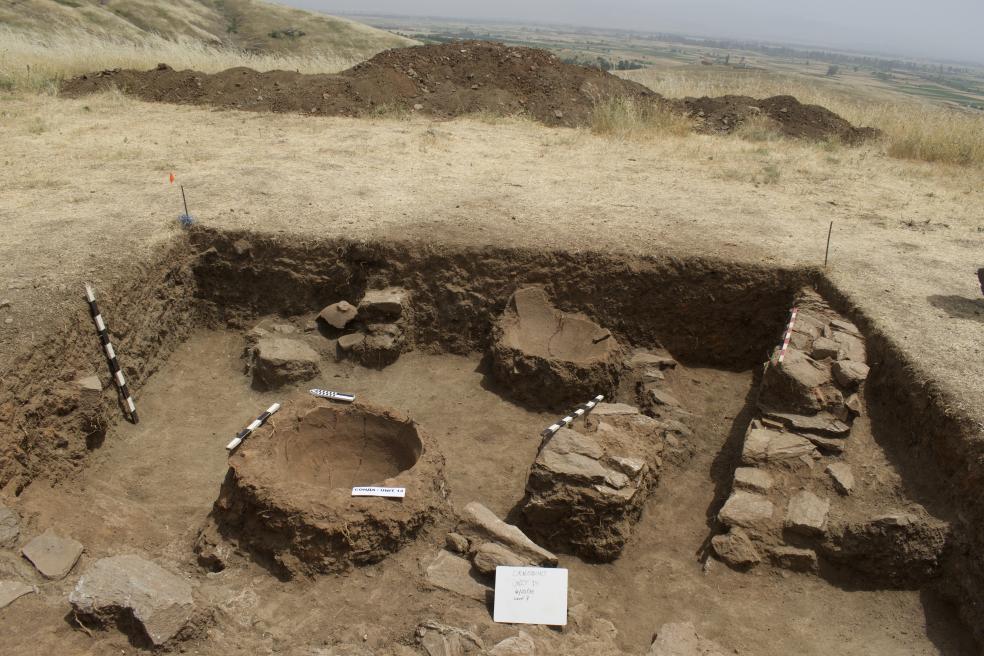The Ancient City of Kibyra, located in the Gölhisar district of Burdur, has reopened its doors after the winter months, welcoming visitors with a captivating surprise: the Medusa mosaic. This unique work, with a history of approximately 2000 years, is considered one of the most important art examples of the ancient period and is now available for viewing once again.
The Medusa mosaic is located in the center of the odeon in Kibyra. Made from colored marbles using the “Opus Sectile” technique, this mosaic depicts the head of the legendary Medusa from mythology. This impressive depiction of Medusa, believed to turn those who look into her eyes to stone, truly mesmerizes visitors.

The mosaic, which was carefully covered during the winter months to protect it from adverse weather conditions, has survived to this day undamaged thanks to the meticulous work of expert restorers. According to Prof. Dr. Şükrü Özüdoğru, Head of Kibyra Ancient City Excavations, the Medusa mosaic can be visited until the end of November 2025.
The Medusa mosaic is one of the most important features that distinguishes Kibyra from other ancient cities. This rare work showcases the advanced level of artistic understanding in the ancient period. Along with the Medusa mosaic, the Ancient City of Kibyra offers visitors an unforgettable historical and cultural experience.
Additional Information About the Medusa Mosaic:
- A special technique called “Opus Sectile” was used in the construction of the mosaic.
- Medusa is a figure in ancient Greek mythology believed to turn those who look into her eyes to stone.
- The mosaic reflects the detail and delicacy of ancient art.
- It is one of the most important artifacts of the ancient city of Kibyra.





